 W
WAdventure was built by the crew of Captain Robert Gray on his second voyage in the maritime fur trade to the Northwest Coast of North America. The 45-ton sloop was built to allow the trading venture to access smaller inlets the Columbia could not reach. At the end of his second voyage Gray sold the ship to the Spanish Navy. It was renamed Orcacitas and served the Naval Department of San Blas for some years.
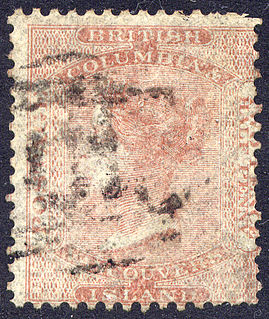 W
WThe postage stamps and postal history of British Columbia started in 1860 with the issue of a single brownish-rose stamp depicting Queen Victoria in profile and denominated as 2½ pence. It was issued jointly by Vancouver Island and British Columbia as each colony had insufficient postal trade to justify printing separate stamps. In 1862, Vancouver Island adopted decimal currency and sold the stamp for 5 cents, before issuing its own 5 and 10 cent stamps in September 1865. Meanwhile, British Columbia had increased the postal rate to 3 pence but continued to use the unified stamp. In November 1865, British Columbia issued its own stamps and the unified stamp became invalid. In 1866, the two colonies were united as British Columbia.
 W
WRobert Brown was a Scottish scientist, explorer, and author.
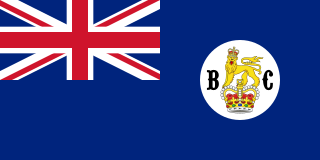 W
WThe Colony of British Columbia was a British Crown Colony that resulted from the amalgamation of the two former colonies, the Colony of Vancouver Island and the mainland Colony of British Columbia. The two former colonies were united in 1866, and the united colony existed until its incorporation into the Canadian Confederation in 1871.
 W
WThe Colony of Vancouver Island, officially known as the Island of Vancouver and its Dependencies, was a Crown colony of British North America from 1849 to 1866, after which it was united with the mainland to form the Colony of British Columbia. The united colony joined Canadian Confederation, thus becoming part of Canada, in 1871. The colony comprised Vancouver Island and the Gulf Islands of the Strait of Georgia.
 W
WDiscovery Island Lighthouse is an active lighthouse built in 1886 on Pandora Hill which is the highest point on Discovery Island in the province of British Columbia, Canada.
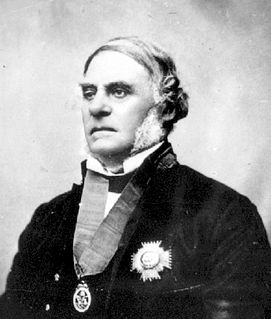 W
WThe Douglas Treaties, also known as the Vancouver Island Treaties or the Fort Victoria Treaties, were a series of treaties signed between certain indigenous groups on Vancouver Island and the Colony of Vancouver Island.
 W
WFort Rodd Hill National Historic Site is a 19th-century coastal artillery fort on the Colwood, British Columbia side of Esquimalt Harbour,. The site is adjacent to Fisgard Lighthouse National Historic Site, the first lighthouse on the west coast of Canada. Both the fort and lighthouse are managed and presented to the public by Parks Canada.
 W
WFort San Miguel was a Spanish fortification at Yuquot on Nootka Island, just west of north-central Vancouver Island. It protected the Spanish settlement, called Santa Cruz de Nuca, the first colony in British Columbia.
 W
WHMS Grappler was an Albacore-class gunboat of the Royal Navy. She served on what is now the British Columbia Coast from 1859 until sold into commercial service in 1868. She sank with significant loss of life as result of a fire in 1883.
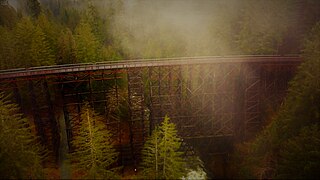 W
WThe Kinsol Trestle, also known as the Koksilah River Trestle, is a wooden railway trestle located on Vancouver Island north of Shawnigan Lake in the Canadian Province of British Columbia. It provides a spectacular crossing of the Koksilah River.
 W
WThe Legislative Assembly of Vancouver Island, sometimes House of Assembly of Vancouver Island, was the colonial parliamentary body that was elected to represent voters in the Colony of Vancouver Island. It was created in 1856 after a series of petitions were sent to the Colonial Office in London protesting the Hudson’s Bay Company’s proprietary rule over the colony. It was the first elected assembly in British North America west of Ontario. Although at first only handful of colonists met the voting requirement, and most of those that did were tied to the HBC, the franchise was gradually extended, and the assembly began to assert demands for more control over colonial affairs, as well as criticize colonial governor Sir James Douglas's inherent conflict of interest as both governor and Hudson Bay Company's chief factor.
 W
WMaquinna was the chief of the Nuu-chah-nulth people of Nootka Sound, during the heyday of the maritime fur trade in the 1780s and 1790s on the Pacific Northwest Coast. The name means "possessor of pebbles". His people are today known as the Mowachaht and reside today with their kin, the Muchalaht, at Gold River, British Columbia, Canada.
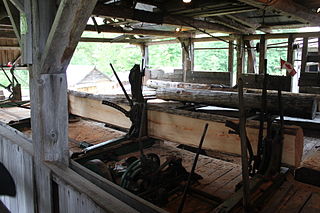 W
WMcLean Mill National Historic Site is a steam-operated sawmill on Vancouver Island, officially open to tourists since July 1, 2000. It was designated a National Historic Site of Canada in 1989.
 W
WNahwitti was a Kwakwakaʼwakw First Nation village and a major trading site during the maritime fur trade era of approximately 1790 to 1850. Today it is an Indian reserve under the administration of the Kwakwakaʼwakw Tlatlasikwala Nation. It is located near the northern tip of Vancouver Island, at Cape Sutil on Queen Charlotte Sound, near Hope Island and the Nahwitti River, east of Cape Scott, and not far from historic Fort Rupert and modern Port Hardy.
 W
WThe Nanaimo mine explosion occurred on May 3, 1887, in Nanaimo, British Columbia killing 150 miners. Only seven miners survived and the mine burned for one full day.
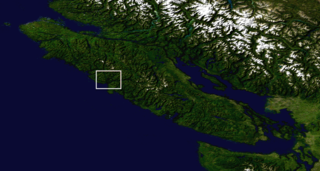 W
WThe Nootka Crisis, also known as the Spanish Armament, was an international incident and political dispute between the Spanish Empire, the Kingdom of Great Britain, and the fledgling United States of America triggered by a series of events that took place during the summer of 1789 at the Spanish outpost Santa Cruz de Nuca, in Nootka Sound, present-day British Columbia, Canada. The commander of the outpost, Jose Esteban Martínez, seized some British commercial ships which had come for the maritime fur trade and to build a permanent post at Nootka Sound. Public outcry in England led to the mobilization of the British and Spanish navies and the possibility of war. Both sides called upon allies, and although Spain's key ally France also mobilized their navy, they soon announced they would not go to war. Without French help Spain had little hope against the allied forces of the British and the Dutch, resulting in Spain seeking a diplomatic solution and making concessions.
 W
WThe Pacific Station was created in 1837 as one of the geographical military formations into which the Royal Navy divided its worldwide responsibilities. The South America Station was split into the Pacific Station and the South East Coast of America Station.
 W
WSanta Cruz de Nuca, was a Spanish colonial fort and settlement and the first European colony in British Columbia. The settlement was founded in 1789 and abandoned in 1795, with its far northerly position making it the "high-water mark" of verified Northerly Spanish settlement along the North American West coast. The colony was first established with the Spanish aim of securing the entire West coast of the continent from Vancouver island southwards, for the Spanish crown.
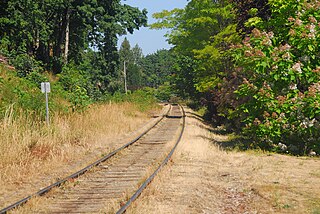 W
WThe Southern Railway of Vancouver Island is 234 kilometres (145 mi) in length, and is the only remaining railway on Vancouver Island, after the formal closure of the Englewood Railway in November 2017. The Southern Railway's line runs from Victoria to Courtenay, with a branch line from Parksville to Port Alberni. In 2006, the Island Corridor Foundation acquired the railway's ownership from the Canadian Pacific Railway and RailAmerica.
 W
WThe Thetis Lake Monster is a legendary creature and admitted hoax of Victoria, British Columbia, Canada. In 1972, two teenage boys claimed to see a monster emerge from Thetis Lake beach. The description of the creature that the teenagers gave matched the description of the Gill-man from the 1954 movie Creature from the Black Lagoon.
 W
WThe 1946 Vancouver Island earthquake struck Vancouver Island on the Coast of British Columbia, Canada, on June 23 at 10:15 a.m. with a magnitude estimated at 7.0 Ms and 7.5 Mw. The main shock epicenter occurred in the Forbidden Plateau area northwest of Courtenay. While most of the large earthquakes in the Vancouver area occur at tectonic plate boundaries, the 1946 Vancouver Island earthquake was a crustal event. Shaking was felt from Portland, Oregon to Prince Rupert, British Columbia. This is one of the most damaging earthquakes in the history of British Columbia, but damage was restricted because there were no heavily populated areas near the epicentre, where severe shaking occurred.
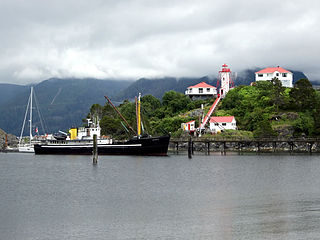 W
WYuquot, also known as Friendly Cove, is a small settlement of around six people - The Williams family of the Mowachaht band, plus two full-time lighthouse keepers, located on Nootka Island in Nootka Sound, just west of Vancouver Island, British Columbia, Canada. It was the summer home of Chief Maquinna and the Mowachaht/Muchalaht (Nuu-chah-nulth) people for generations, housing approximately 1,500 natives in 20 traditional wooden longhouses. The name means "Wind comes from all directions" in Nuu-chah-nulth.
 W
WThe Yuquot Whalers' Shrine, previously located on Vancouver Island, British Columbia, was a site of purification rituals, passed down through the family of a Yuquot chief. It contained a collection of 88 carved human figures, four carved whale figures, and sixteen human skulls. Since the early twentieth century, it has been in the possession of the American Museum of Natural History in New York City, but is rarely displayed. Talks are underway regarding repatriation.